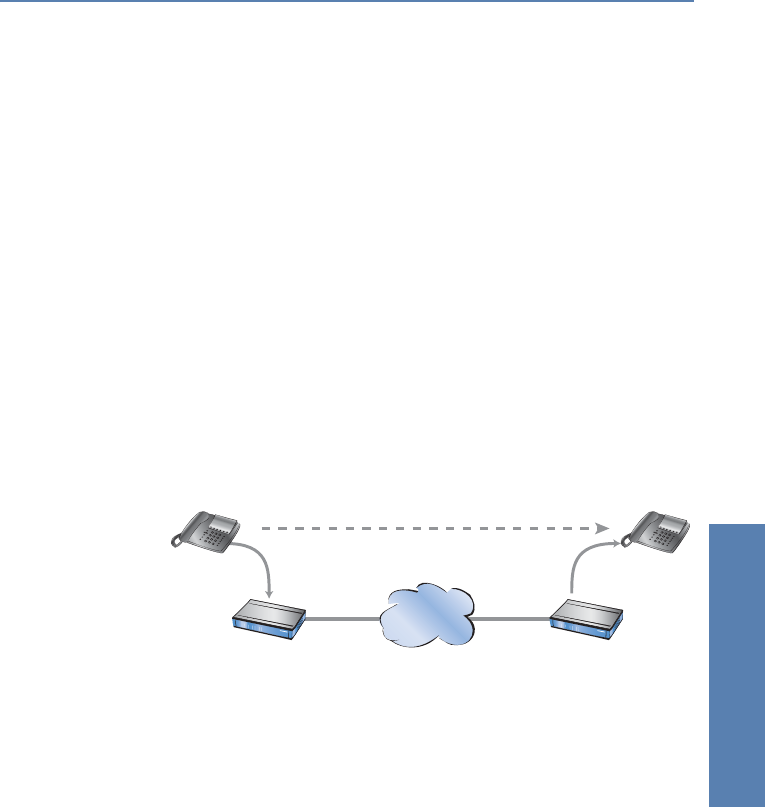
̈ Chapter 9: Quality of Service LANCOM Reference Manual LCOS 3.50
179
Quality of Service
Accordingly, a VoIP connection should be configured such that the criteria for
good speech quality are met: Packet loss up to 10%, delay up to 150 ms and
jitter up to 10ms.
̈ Jitter can be removed in the receiving station by an appropriate buffer. In
this buffer (jitter buffer) the packets are stored intermediately, and passed
on at a constant rate to the addressee. By this intermediate buffering, the
delay variations due to individual transmission times of the individual
packets can be removed.
̈ The delay is influenced by several components:
୴ Time of processing (packeting, coding and compression by the sender
and the addressee), duration of handing over the packet from appli-
cation to the interface (serialization), and the time for transmitting via
the WAN distance (propagation) contribute to the fixed part of delay.
୴ The variable part is determined by the jitter resp. by the setting of the
jitter buffer.
These two parts together compose a delay, which should ideally not
exceed 150 ms.
̈ Apart from the general loss by network transmission, the packet loss is
significantly influenced by the jitter buffer. If packets arrive with a larger
delay than it can be balanced by the jitter buffer, the packets will be dis-
carded and will increase the packet loss. The larger the jitter buffer, the
smaller is the loss. Conversely, the entire delay will increase with the jitter
buffer size. That means for configuration, that the jitter buffer should be
selected as small as the quality can be considered still as sufficient.
Delay < 150 ms!
Processing
Serialization
Propagation
Processing


















